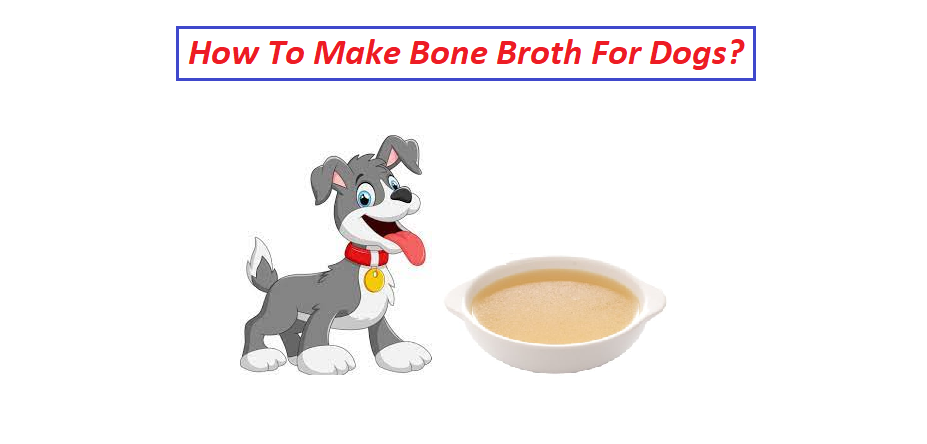Make a yummy and healthy Bone Broth for Dogs using beef bones and veggies! It’s an easy way to give your dog extra vitamins and nutrients. The broth smells amazing, and our dogs get super excited when it’s time to eat.
Bone broth is good for dogs because it has collagen, glucosamine, protein, and amino acids like glycine. These things help your pup stay healthy and happy. Collagen is good for their movement, skin, fur, and digestion. Glucosamine helps their joints and can slow down arthritis. Protein and glycine make proteins strong and stop them from getting weak.
Bone broth can be good for dogs with tummy troubles. It keeps them hydrated and helps their stomach get back to normal after they’ve been sick.
Benefits of Bone Broth for Dogs
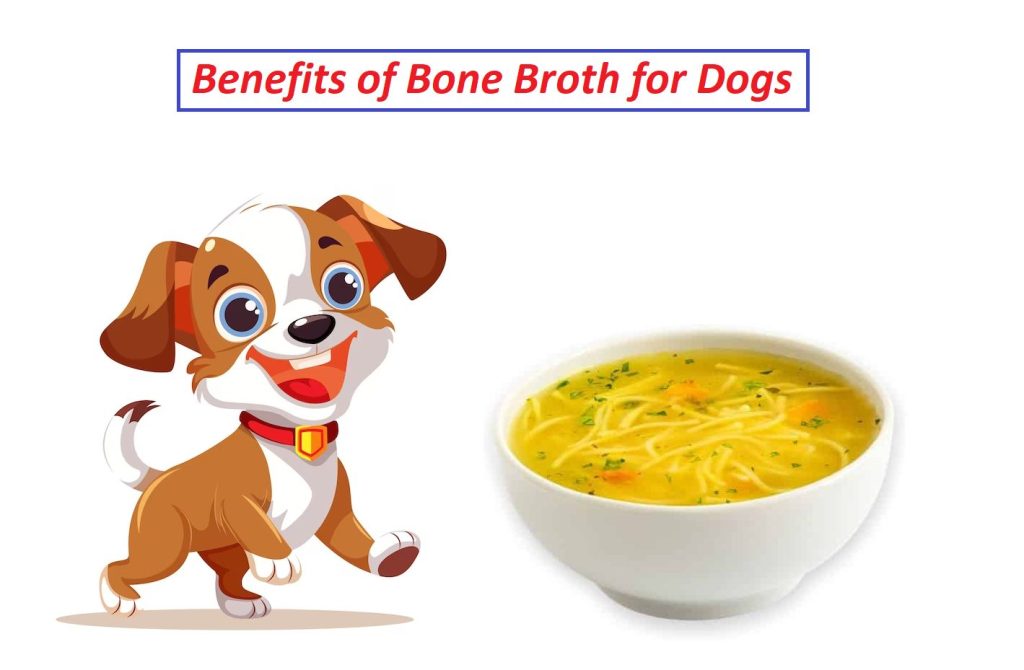
Bone broth is super healthy for dogs and packed with essential nutrients they need. It’s full of easily absorbed nutrients that help keep your dog hydrated and support their overall health. Depending on the type of bone you use (like turkey, beef, or pork) and whether it’s a marrow bone, along with the vegetables you add, the nutritional content can vary. Adding veggies not only gives flavor but also provides extra vitamins and minerals.
You may like to read: How To Treat Tomato Poisoning In Dogs?
Supports Joints
When our pets have issues with their joints, giving them extra collagen in their diet is important. Primalvore bone broth is a good choice for this because it contains glucosamine and chondroitin sulfate, which can help reduce inflammation in a dog’s joints. Additionally, hyaluronic acid in bone broth supports joint health by providing cushioning and preserving collagen.
Strengthens Bones
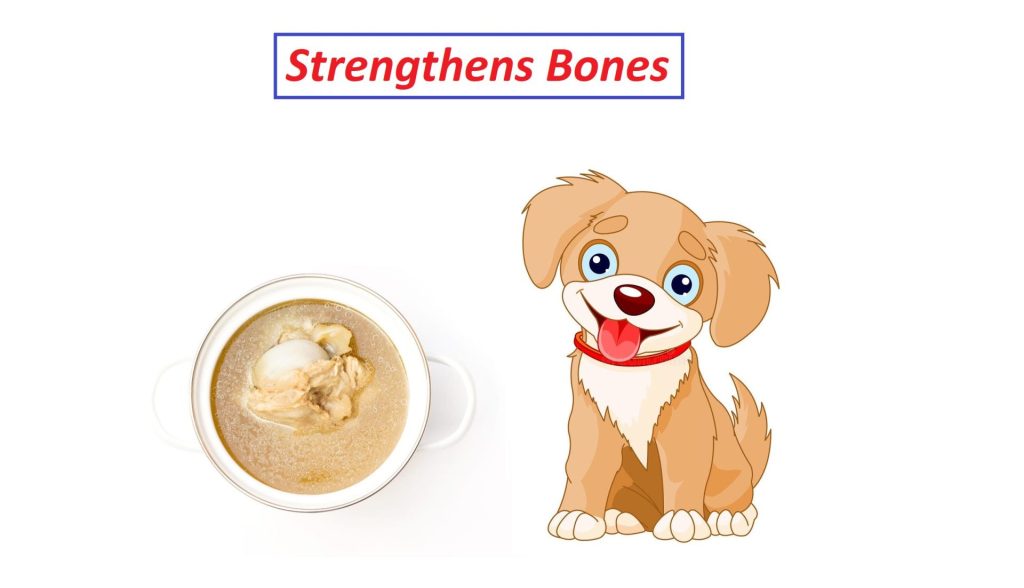
Bone broth is full of amino acids, which can help your dog make their muscles and bones stronger. Collagen, an important part of bones, turns into gelatin when animal bones are cooked to make bone broth. Collagen and gelatin give your dog a lot of protein and amino acids (proline and glycine). These help their body make more collagen, which keeps their bones strong.
Digestive Health
The gelatin in bone broth is kind to the tummy and might help calm and repair the gut lining. This can be really useful for dogs with sensitive stomachs, food allergies, or tummy problems.
Hydration
Bone broth has lots of water, and it can help your dog stay hydrated, especially if they’re not drinking much water by themselves.
Improved Appetite
The yummy smell and taste of bone broth can encourage dogs to eat, especially when they’re not feeling great or don’t want to eat much. You can put it on dry dog food or use it to add moisture to freeze-dried or dried foods.
Immune System Support
The good stuff in bone broth, like amino acids and minerals, can help make your immune system stronger.
Coat and Skin Health
Bone broth can make your dog’s skin and fur look better and healthier because it has good stuff in it.
Detoxification
Some people think that the amino acids in bone broth, like glycine, can help the body with its detoxification processes.
Homemade and Natural
When you make bone broth for your dogs at home, use good stuff to control what’s in it. That way, you avoid any extra or fake stuff. Bone broth is a great extra treat for dogs, no matter how old or big they are, and no matter what they normally eat.
You may like to read: What Happens If Dogs Eat Gum?[Expert Guide 2023]
Step-by-step guide on how to make bone broth for dogs
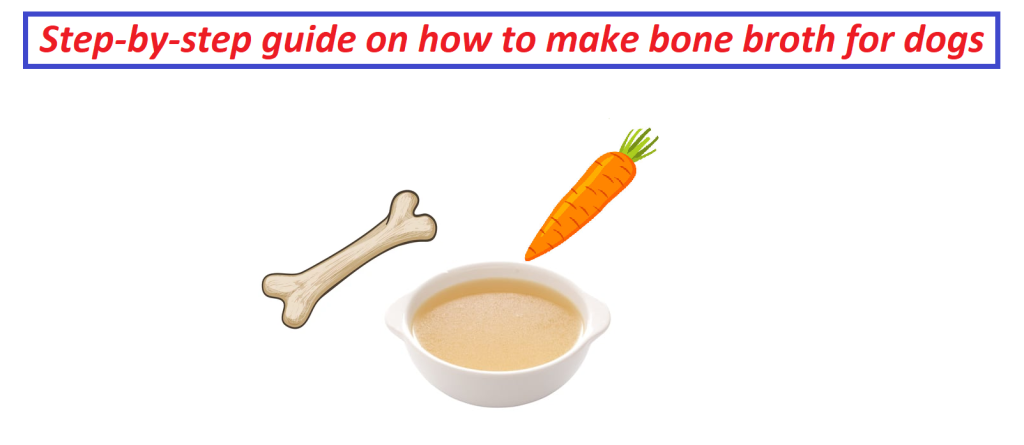
Step 1
Start by putting bones in your slow cooker. If you don’t have one, use an ovenproof dish with a lid and cook on low heat. For a broth rich in joint-protecting gelatin, use bones with many joints, like raw chicken or duck feet, and add a marrow bone or two if available. Break the bones before adding to release the goodness.
If you don’t have raw bones, use any leftover bones from your meals. Just make sure to wash off any sauce or gravy before putting them in the pot.
Step 2
Pour hot water into the pot until the bones are covered and add an extra inch for more broth. After that, put in three tablespoons of unprocessed Apple Cider Vinegar (ACV) with ‘the mother’.
Why use Apple Cider Vinegar?

Adding apple cider vinegar (ACV) to the broth helps extract minerals from the bones, making the broth thick and nutritious. Broth without ACV won’t be as thick or nutritious.
Step 3
Set your slow cooker to low heat (or place the pot in the oven at approximately 120 degrees Celsius) and let it cook for 24-36 hours. You can go a bit longer, but I’ve noticed it tends to overcook and become dry after this period.
Step 4
Remove the bones! Cooked bones are not safe for your dog to eat, so take them out and throw them away. Let the broth cool on the counter. Use a strainer or colander to separate the liquid into a different bowl.
You may like to read: Why Do Dogs Eat Leaves?
Step 5
After it cools down, put the broth in the fridge. Let it sit until a layer of hard fat forms on the top. Overnight is best, but a few hours will work too.
Step 6
Remove fat, and keep clear broth. Jelly texture means more gelatin, good for dog joints and gut health. If not jelly-like, add more vinegar next time. Use current broth – still healthy.
Step 7
Choose how to save your broth. I pour mine into ice cube trays and freeze it. Then, I give Dolly and Reggie one ice cube each day. If you have a bigger dog or more than one dog, you might want to store yours in a Kilner jar in the fridge and give them a spoonful every day. The broth will stay in the fridge for three days.
Step 8
Give it to your dog to eat!
You may like to read: How Strong are Dogs Teeth?
FAQs: How To Make Bone Broth For Dogs?
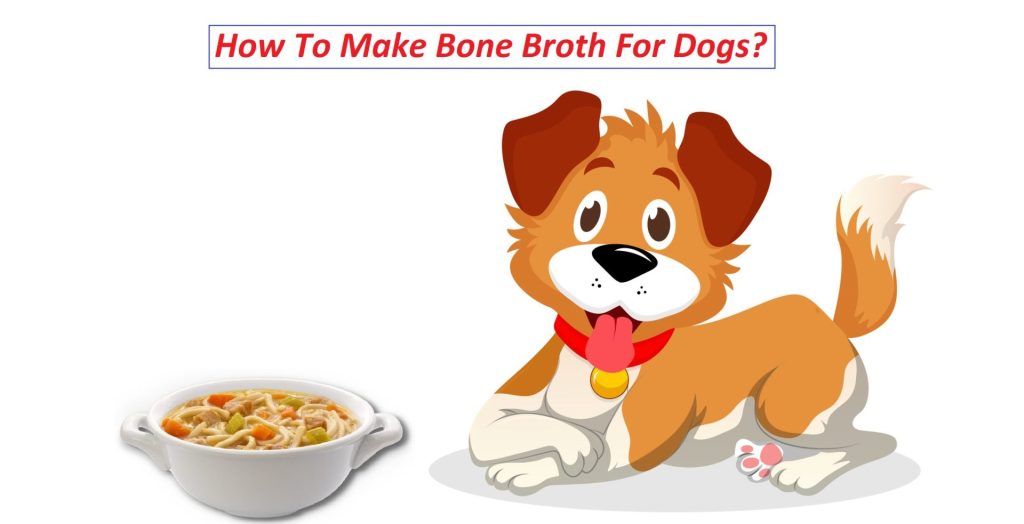
Still not satisfied, Here are some frequently asked questions:
What type of bone broth is best for dogs?
When picking bone broth, choose one made from good-quality animals that were grass-fed or raised in a pasture. Make sure it doesn’t have any fake stuff added, like preservatives, and doesn’t have too much salt. It’s also good to go for organic options!
Is boiled bone broth good for dogs?
Bone broth has lots of collagen, a protein that keeps skin and hair healthy. It also gives moisture to a dog’s skin, stopping it from getting dry and flaky. It helps soothe irritated and itchy skin too.
What ingredients to avoid in bone broth for dogs?
Dogs should avoid human bone broth because it can have ingredients like onion and garlic that are not safe for them. Also, store-bought options may have too much salt for dogs.
What are the side effects of bone broth for dogs?
In general, bone broth is mostly safe for dogs and cats, but there are a few things to watch out for, like upset stomach and allergies. Make sure to read the ingredients on any product you give your dog, as they might not agree with some of them.
Is homemade bone broth safe for dogs?
Bone broth is super good for dogs. It’s packed with important nutrients that are easy for them to absorb. Each time your dog has some bone broth, they get hydrating nutrients that help keep them healthy.
Can I give my dog bone broth every day?
Absolutely, dogs can have bone broth every day! Just use it as a tasty addition to their usual meals. Remember, it’s not a complete replacement for their regular food because it doesn’t have all the nutrients they need to stay healthy.
What is the difference between bone broth and dog bone broth?
Bone broths like Honest Kitchen and Solid Gold use ingredients that are safe for humans and dogs. It’s better to choose broths specifically made for dogs because they have less salt and no harmful ingredients like onions, which can be bad for dogs.

